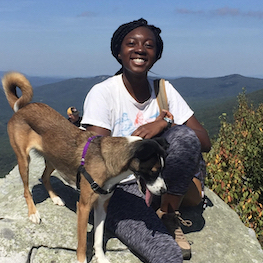
In 2018, the governing body of the Ecological Society of America adopted the Four-Dimensional Ecology Education Framework (4DEE) that made explicit the need for teaching to extend beyond the core concepts covered in traditional textbooks. The four dimensions include: (1) ecological concepts; (2) ecology practices; (3) human-environment interactions; and (4) cross-cutting themes. Ideally, this new framework will help instructors effectively teach the next generation of ecologists while enhancing ecological literacy.
SimBio Ecology is uniquely suited to support efforts that adopt the 4DEE framework. Our interactive chapters do more than simply deliver content, they help students understand how ecologists know what they know, illustrate why students should care, and demonstrate how ecology relates to the broader field of biology.
SimBio & 4DEE Ecology Practices
For example, SimBio Ecology addresses Ecology Practices by emphasizing the importance of teaching the basic components of the scientific method as well as the quantitative reasoning and computational thinking skills used by practicing ecologists. Rather than simply telling students what key studies have shown, we model the scientific method by having students work through the key steps of a study in much the same way as the initial researcher did. For example:
- Behavioral Ecology, as part of its discussion of sexual selection, examines two hypotheses to explain female choice by the long-tailed widowbird. As students review Malte Andersson’s (1982) experiments they are challenged to generate explicit graphical predictions based on each hypothesis. They are challenged to draw an appropriate conclusion by comparing Andersson’s data to their predictions.
- Biogeography introduces students to species-area curves, a common empirical pattern. However, rather than simply stating that species richness tends to increase with island area, students virtually sample the number of reptile and amphibian species on 7 Caribbean islands and then plot the data. They not only see that the variables are related, but discover that the log-transformed data are linearly related.
- Community Dynamics introduces the notion of trophic cascades with a behavioral trophic cascade. Students first use a simulation that includes elk, aspen, and an exclosure to test the hypothesis that herbivory can reduce aspen density. Then, they reproduce the natural experiment that was wolf re-introduction to see if wolves affect aspen by altering elk behavior. They conclude by examining some of the data offered in support of the behavioral-cascade hypothesis as well as reviewing some of the research arguing it’s a purely numerical effect.
Students are often surprised to discover how quantitative many ecological practices are and the degree to which ecologists rely on models to generate predictions and test hypotheses. From simple models of population growth to MacArthur and Wilson’s model of island biogeography and the complex general circulation models of Earth’s climate, models are a key tool in the ecologists toolkit. While these models are often rooted in simple concepts like the conservation of energy, students struggle to understand them – luckily, our interactive chapters allow them to work with models in dynamic, engaging ways. For example:
- Population Growth, Competition, and Predation, Herbivory, and Parasitism introduce students to fundamental models of population growth including geometric, exponential, and logistic population growth models as well as Lotka-Volterra competition and predation equations. Students are not only given abundant practice working with population growth models, but they can see how altering parameters affects population dynamics. What’s more, our interactive exercises bring abstract, often confusing concepts like zero-growth-isoclines to life by letting students explore how changing their location—by changing key parameters—affects the outcome of competitive interactions.
- Physiological Ecology and Nutrient Cycling illustrate the power of budgets and systems thinking. In the former, students construct a heat budget for a kangaroo rat and modify it in to determine what the small mammal’s options are for trying to maintain homeostasis. Similarly, Nutrient Cycling introduces students to small watershed nutrient budgets and shows that they are a powerful tool for helping ecologists determine the fate of nitrogen or phosphorus entering the system
- One of the reasons many people are skeptical of claims linking human behavior to climate change is because they don’t understand the models supporting this conclusion. Climate Change helps alleviate this by showing students that as complex as global circulation models are, they are based on simple, well-understood physical principles like black-body radiation, albedo, and greenhouse gasses. It goes on to illustrate how climate models like those produced by NASA can be used to test the ability of various combinations of natural and anthropogenic drivers to reproduce historic climate patterns. Students discover that historic temperature changes cannot be reproduced unless the models include the observed changes in greenhouse gasses.
As these examples illustrate, SimBio Ecology does more than simply define key concepts and introduce ecological vocabulary. Our chapters help students learn to work with models and evaluate scientific studies. In short, SimBio Ecology helps students learn to think like ecologists. This is one of the reasons why we think it is well-suited for instructors who want to structure their course using the 4DEE framework.






 Risk, Insurance, & Climate Policy
Risk, Insurance, & Climate Policy

